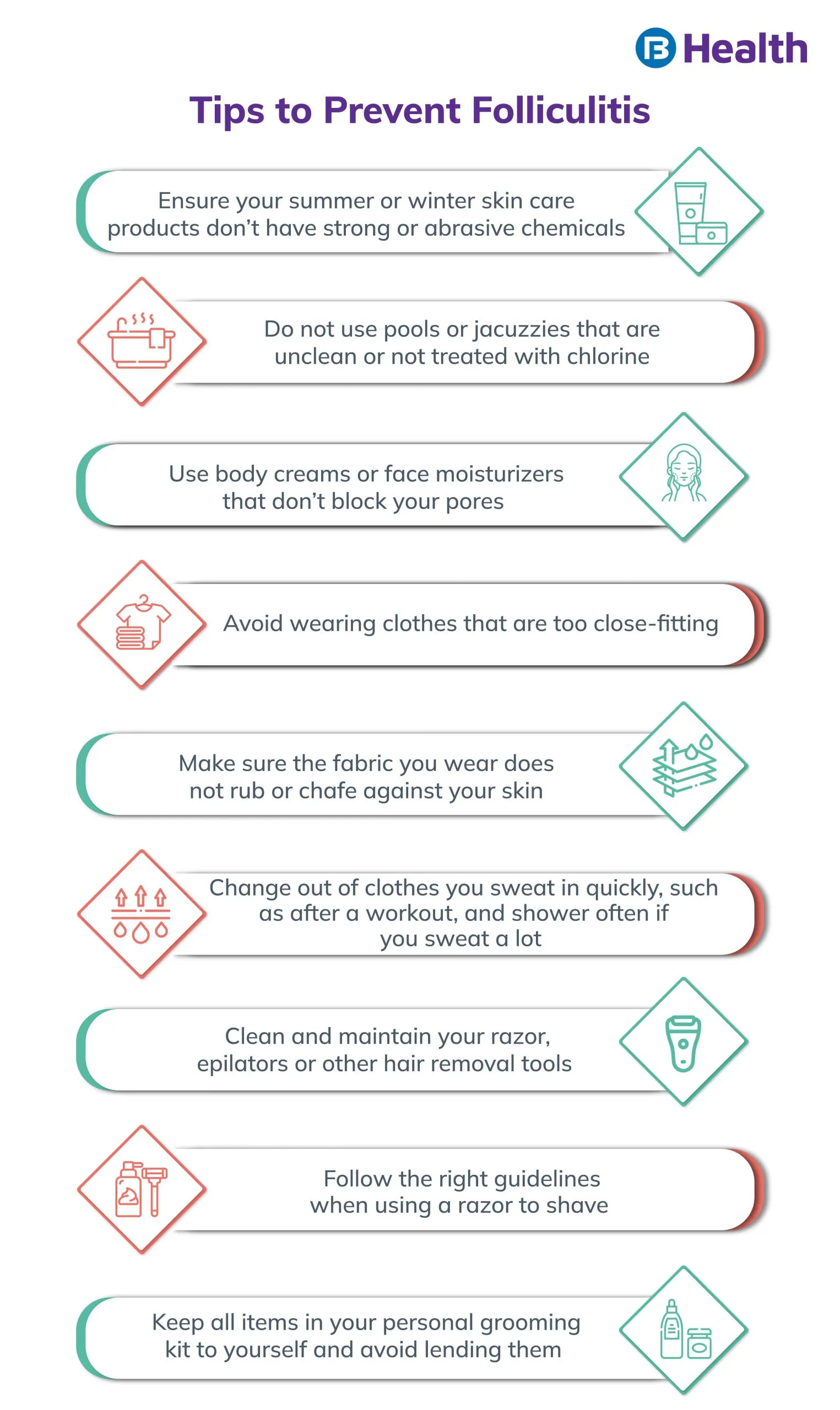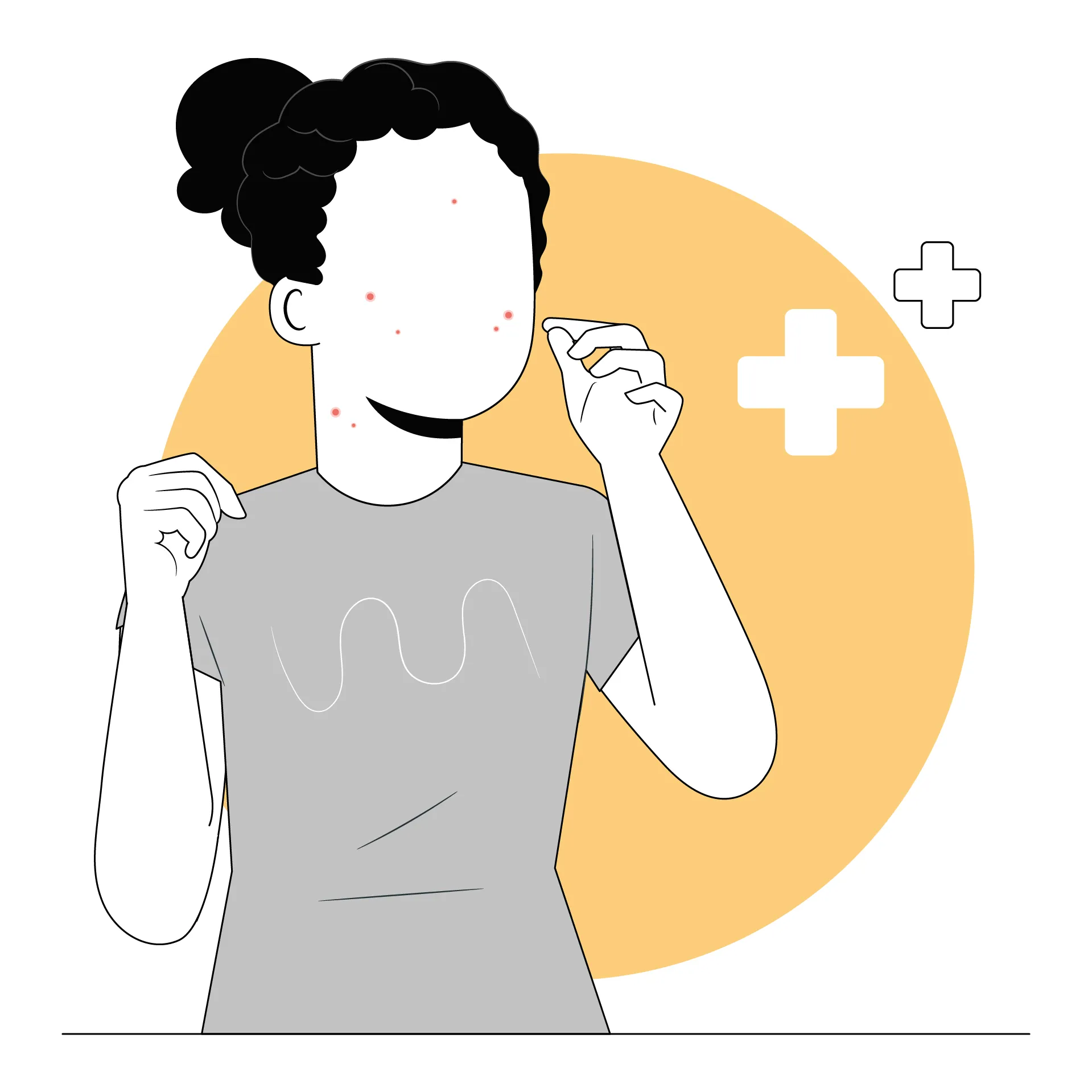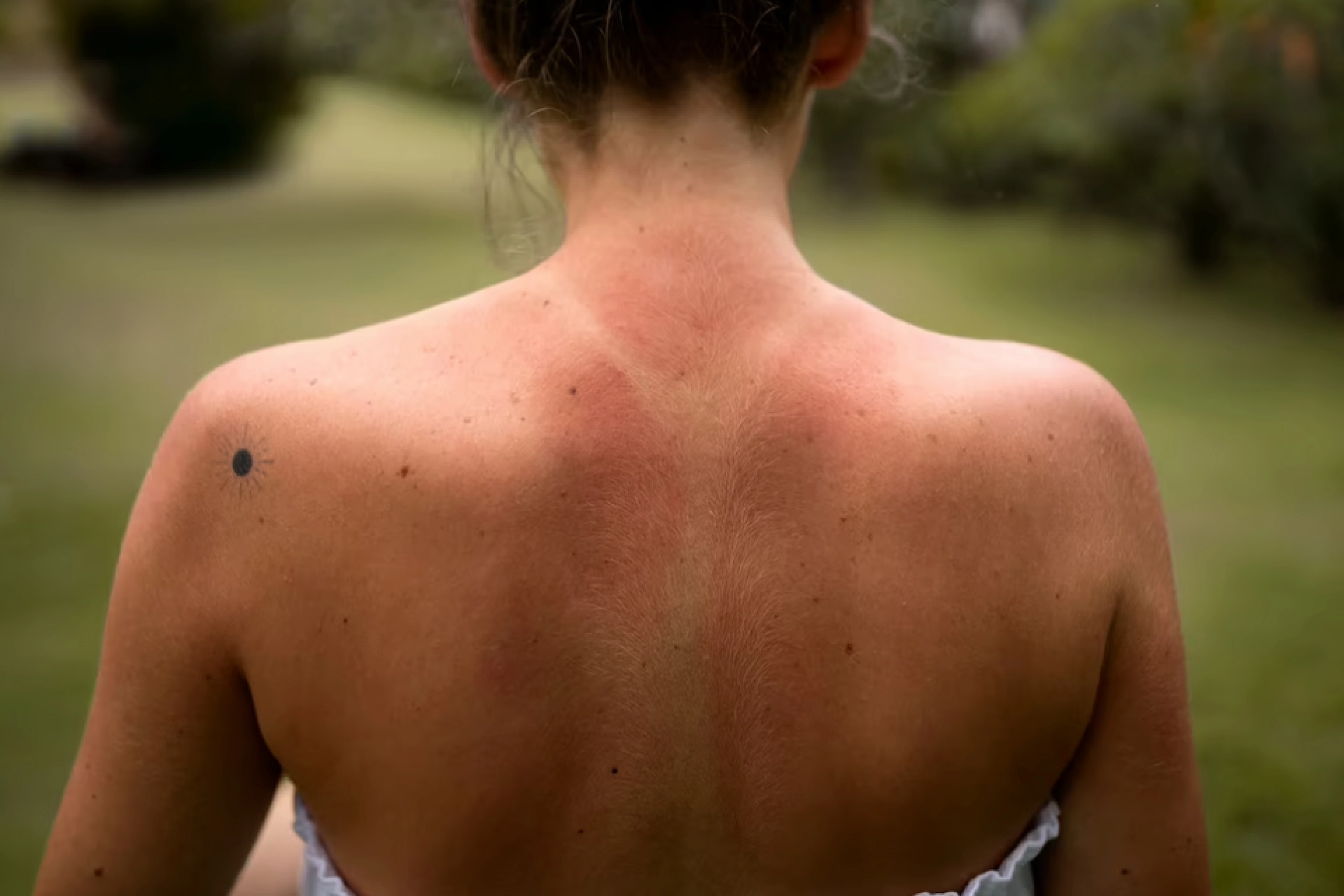Physical Medicine and Rehabilitation | 5 min read
What is Folliculitis? Symptoms, Causes, Treatment and More
Medically reviewed by
Table of Content
Key Takeaways
- Folliculitis is an inflammatory skin condition that affects your hair follicles
- Folliculitis causes include sweating, frequent shaving and certain chemicals
- Medication, surgery and home remedies are folliculitis treatment options
What is folliculitis; is an inflammation that affects one or more hair follicles, which are small cavities around the root of your hair. Folliculitis causes mainly include a bacterial or fungal infection that can trigger the condition. It can happen anywhere on your skin where hair grows. It most likely appears in places of frequent friction, such as necks, thighs, or armpits. It may resemble a rash or acne and can occur for a short time or be chronic.
There are various types of folliculitis such as bacterial folliculitis, eosinophilic folliculitis, scalp folliculitis. Treatment for folliculitis depends on the type and severity. In mild cases, it can clear in a few days with some simple self-care measures. But you will need prescribed medication to address severe issues.
Whatever the case, get folliculitis treatment at once to avoid complications. But to get treatment, you need to be able to identify the condition. Read on to know more about the symptoms, causes, treatment, and diagnostic process of folliculitis.
Common symptoms of folliculitis
It can cause crusty or small bumps on your skin. Some lumps may be pustules and may look like pimples. Pustules are raised bumps that contain pus. The color of these can be white, red, or yellow. Apart from this, you may also experience the following:
- Itching
- Swelling
- Soreness
- Tender and painful skin
- Crusty sores
- Inflamed skin
Be sure that you do not scratch at the bumps or sores to avoid opening them up. This is because it can cause your hair follicle to be more infected.
Additional Read: What is Eczema Symptoms
Common folliculitis causes
As mentioned, it is generally triggered by a fungal or bacterial infection. Such infection can make your hair follicles swell. This leads to the formation of uncomfortable bumps on your skin. Infection by fungus, yeast, virus, or Staph bacteria all forms a part of common folliculitis causes.
Folliculitis causes also include the following:
- Inflammation, irritation, or acne on the skin
- Certain medications that suppress the immune system
- Closure or obstruction of a hair follicle
- Topical creams containing steroids
- Certain chemicals that bother the skin
Risk factors of folliculitis
Anyone can have it at any time, but you can be more or less vulnerable to it. Habits or conditions that can increase your chances of developing folliculitis are as follows [1]:
- Trapped sweat as a result of form-fitting outfits or not bathing after physical activity
- Any reason that leads to continual skin chafing
- Regularly using a razor for hair removal
- Being overweight or obese
- Having a history of diabetes
- Prolonged use of antibiotics
- Using public swimming pools or other standing water bodies that are not cleaned properly
- Having cancer, HIV, or other diseases that can damage your immunity
Diagnosis of folliculitis
Generally, doctors diagnose folliculitis after conducting a physical exam and assessing your medical history. The doctor will also ask you about your daily activities or habits to understand if you are at risk of this condition. Your general doctor may be able to diagnose this infection, too, and you may not need to visit a skin specialist. In cases that are severe or where folliculitis persists, you will need to consult with a dermatologist.

Folliculitis treatment options
Folliculitis treatment depends on the severity and type of folliculitis you have. Usually, your folliculitis treatment may consist of one or a combination of the following options:
Oral and topical medication
Considering the type and severity of folliculitis, your doctor may prescribe creams, shampoos, or medicines. These help in reducing inflammation and controlling or fighting certain infections.
Surgery or the use of a laser to remove hair
Your doctor may advise surgery if you have a large boil. By making a small cut, all the pus from the boil is allowed to drain. This can hasten the healing process and reduce the chances of having a permanent scar.
If it is persistent and other treatments are not effective, your doctor may tell you to go for laser treatment to remove hair. This option can help clear the infection by reducing hair density and removing the hair follicles. However, there are some studies that show laser removal can also lead to folliculitis when the hair is coarse [2]. So, talk to your doctor about the best treatment option.
Home remedies
These are generally most effective in cases of mild folliculitis. Home remedies can halt the increase of inflammation and reduce pain or skin irritation. They include:
- Gently wash the affected area with an antibacterial soap
- Applying gentle moisturizers that calm the skin
- Use a soft cloth that is damp and warm to pat the infected skin
- Applying a compress or washcloth that is warm and moist
- Stop shaving hair for a few weeks
- Taking necessary precautions like not sharing personal grooming items
Timely treatment is the only way to avoid any complications of folliculitis. Some common complications of this condition are:
- Spread of infection to other areas and recurring inflammation
- Irreversible loss of hair
- Boils that form under the skin
- Dark patches or scars that appear on the skin
- Skin infections
You can overcome some of these complications by opting for a hair transplant or other treatment options. But some of these options can be painful, and treatment may be expensive. As a result, it is best to get folliculitis treatment as soon as possible.
Additional Read: What is Skin PsoriasisTry to prevent folliculitis by taking good care of your skin. One of the best ways to do so is by making the most of coffee's benefits for the skin! This includes using a coffee scrub to help exfoliate your skin and prevent any ingrowth. Despite preventive measures, you can still develop folliculitis.
If you notice any signs of infection, contact a doctor to understand your treatment options. Book a teleconsultation on Bajaj Finserv Health to consult with top dermatologists in just a few clicks. They can help form a treatment plan that best suits your skin and hair type. Talking to skin specialists can also help you get tips for summer and winter skin care and hair care. This way, you can keep your skin and hair healthy.
References
- https://www.ncbi.nlm.nih.gov/books/NBK547754/
- https://www.ncbi.nlm.nih.gov/pmc/articles/PMC7380697/
Disclaimer
Please note that this article is solely meant for informational purposes and Bajaj Finserv Health Limited (“BFHL”) does not shoulder any responsibility of the views/advice/information expressed/given by the writer/reviewer/originator. This article should not be considered as a substitute for any medical advice, diagnosis or treatment. Always consult with your trusted physician/qualified healthcare professional to evaluate your medical condition. The above article has been reviewed by a qualified doctor and BFHL is not responsible for any damages for any information or services provided by any third party.





